We’re not alone – 5 Global reforestation programs similar to Rainforest Rescue
We’ll admit, there are times in the intense heat and humidity, amongst the biting insects and vocal dissenters when we wonder if it’s all worth it.
Will our efforts on the ground in this precious fragment of the planet make any lasting difference to provide a secure nature refuge to flora and fauna found nowhere else in the world?
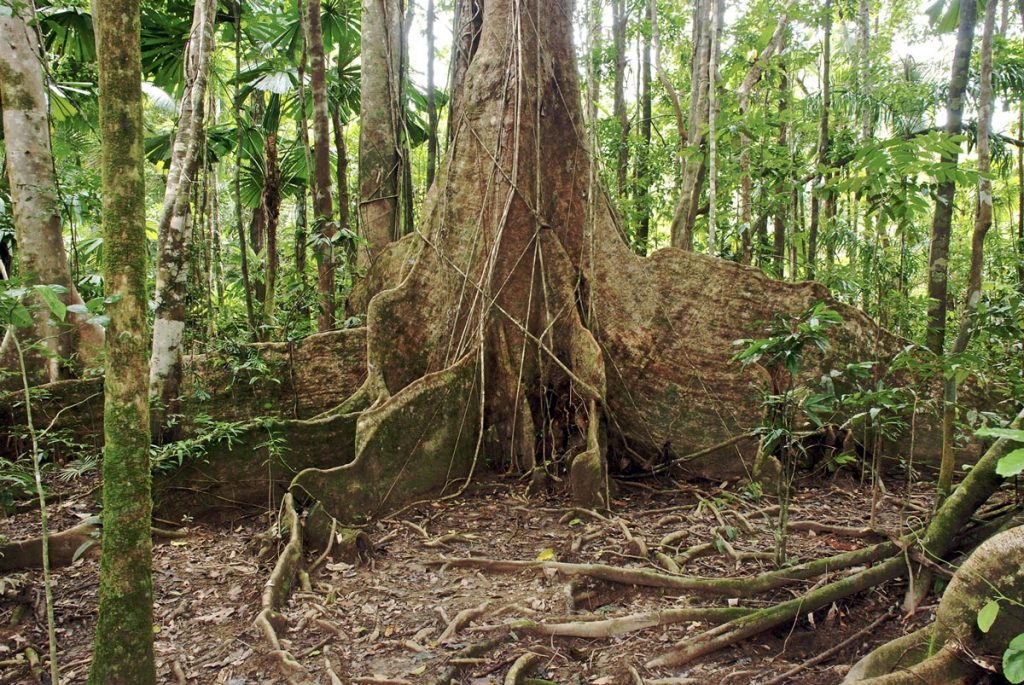
Image credit: Dean Jewell
Then, we step back.
We see healthy plants taking root and binding the soil, endemic insects pollinating native flora and traces of endangered cassowary activity scattered across the forest floor. The spectrum of local, specialist species that were community-planted several years ago have formed a canopy. Self-seeders have moved in. The jarring divide between old growth Daintree rainforest and former pastoral farmland is starting to soften. Reforestation and restoration is happening.
We step back further.
To realise, we are not alone. In fact, we are legion.
Recently, Rainforest Rescue was fortunate to have received a grant from One Earth, a non-profit organisation that accelerates climate action through philanthropy. Their generosity gives us another chance at purchasing additional properties in the Daintree region.
One Earth also chose Rainforest Rescue as one of ‘Five projects that are protecting and restoring nature to tackle climate change’ to exemplify the work they are supporting, placing our innovative approach to rainforest restoration on the global stage.
It is thrilling (and humbling) to learn that our fragment is one of many.
One Earth’s ‘Project Marketplace’ places Rainforest Rescue’s work in the Daintree rainforest amongst over a hundred other projects across the globe. Much like the native seedlings in our new nursery, that number is growing.
The connection with One Earth gives us visibility on restoration and revegetation work similar to ours. Organisations like Rainforest Rescue are in action on every continent to secure a future for habitats, ecosystems and the species within them.
Inspired by our inclusion, we’ve travelled the world (via the Project Marketplace!) to see where else ‘trees are the answer’.
Here are five innovative forest regeneration projects that feel familiar to our own:
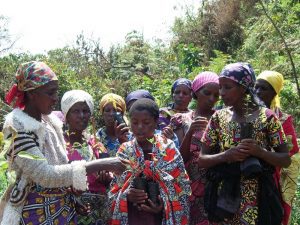
1. Protecting and Restoring the Itombwe Rainforest through Community Action in the Congo
Itombwe Rainforest in the Democratic Republic of Congo (DRC) is an internationally recognised conservation area due to its biodiversity. This habitat is under constant threat from logging, farming, mining and conflict.
For five years, women in South Kivu Province have been organising through the Women’s Earth and Climate Action Network (WECAN) in partnership with Synergie des Associations Feminines du Congo (SAFECO) to protect the rainforest and reforest previous clear-cuts.
As part of this project, forest restoration across over 1,200 km2 is underway. The focus is on protecting old-growth trees and regenerating damaged forest ecosystems for both biodiversity and climate mitigation.
The project will also create income-generating livelihoods for women through tree planting and harvesting and the sale of fruits and herbs from planted trees.
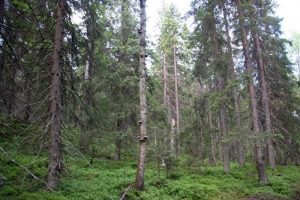
Image credit: Tero Mustonen, Snowchange Cooperative
2. Protecting a Critical Climate Stabilisation and Traditional Community Boreal Forest Area in Finland
About 5% of Finland’s primary boreal forests, known as the ‘Amazonia of the North’, remain intact. Jaakonvaara is one of the last unprotected forests and is in danger of being lost to a forestry company that plans to clear-cut the land in eastern Finland.
Nonprofit Snowchange Cooperative runs the Landscape Rewilding Programme and is aiming to acquire and protect the site. Jaakonvaara has importance for its value as a carbon sink, a biodiversity hotspot—particularly for boreal species, including wolverine and forest bird species—and as a key area for natural water protection.
The land purchase will benefit the traditional land uses and needs of the local community of Jaakonvaara in Lieksa.
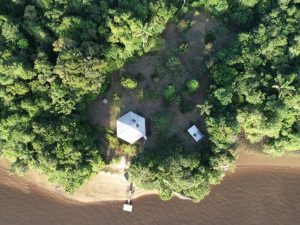
3. Preserving Critical Rainforests and Transforming Education at Sophia Point, Guyana
85% of Guyana in South America is still covered in forests, which store over 5 billion tons of carbon and an incredible diversity of plants and animals. But, Guyana is one of the most vulnerable countries on Earth to the effects of climate change.
The Sophia Point Rainforest Research Centre, a proposed 40-acre site alongside the Essequibo River in the heart of Guyana, will document and preserve hundreds of miles of unexplored rainforest. Accessible by boat, it will be the country’s first wildlife and rainforest research centre.
Sophia Point will also focus on transforming education, teaching Guyana’s next generation of leaders by allowing visitors to come and learn about the importance of the forest for biodiversity, climate change, and public health.
Through direct partnerships with Indigenous and local communities, Sophia Point will integrate local environmental expertise with cutting-edge science to secure a sustainable, more equitable future for the country’s population and its forests.
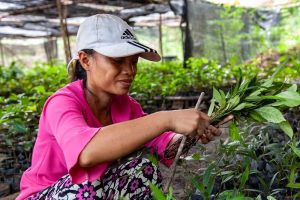
Image credit: Stephanie Gee
4. Implementing a Women-led Planetary Health Approach to Rainforest Regeneration in Gunung Palung, Indonesia
Gunung Palung National Park (GPNP) is a 108,000-hectare rainforest in Indonesian Borneo. Rich in biodiversity, it is home to 3,000 critically endangered orangutans, and serves as a watershed for 120,000 people. Logging in the region has caused massive deforestation, destroying vast amounts of critical flora and fauna. Over 150,000 orangutans were lost from its impact.
In 2007, Health in Harmony and their Indonesian partner Alam Sehat Lestari (ASRI) began investing in community-designed solutions to protect and restore GPNP. This program has led to a 90% drop in households logging illegally in the national park, stabilising primary forest loss and biodiversity. It is women-led, 100% of the staff are Indonesian, and the solutions to preserving this ecosystem have been designed exclusively by the communities.
The program will soon reforest 50 hectares of rainforest, estimated to protect over 2 million tons of carbon from entering the atmosphere and mitigate the effects of the climate crisis. Additionally, the intersectional design of the project means that access to affordable healthcare, training in regenerative organic farming and a chainsaw buy-back scheme supports a transition away from degradative livelihoods.
These investments create a positive feedback loop improving both forest integrity and community health, wellbeing, and economic stability.
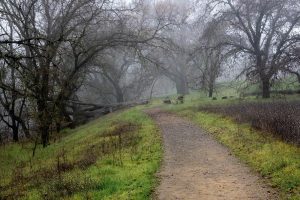
5. Using Cutting-edge Technology to Build Community and Climate Resilience in California’s Vulnerable Oak Savanna
California oak woodlands are host to half of the vertebrate species in this US state. They play an essential role in air, soil, and water quality and are increasingly vulnerable to catastrophic wildfire. For thousands of years, the Yocha Dehe Wintun tended these lands with cultural fire. The region is also home to many of the earliest certified organic farms and is a leader in regenerative agriculture.
The ForeverGreen Forestry project is a woman-owned business collaborative preparing communities to live with wildfire. The project has partnered with Land Tender, a cutting-edge technology platform developed by Vibrant Planet that can monitor and model interventions in forest ecosystems to make them more resistant to wildfire while increasing carbon storage and biodiversity.
This project aims to have native oaks and pines and their dependent species survive climate change and fire. The Yocha Dehe tribe will continue to steward this land as they have for millennia. Ranchers will reintroduce fire to their pastures to improve soil health, reduce fuel, and support grazers and native species. Neighbouring residents will be prepared, like historic tribal communities, for frequent, cool fires. Other bioregions will be able to replicate this model to create climate resiliency.
For Rainforest Rescue and its supporters there is a deep satisfaction from giving back, regenerating and healing the land.
“Not only is the rainforest an important home for the greatest biodiversity on Earth, it contributes to the cooling effect of our climate as well.” says Justin McMahon, Rainforest Rescue’s Land Manager.
We’re part way through the UN Decade on Ecosystem Restoration 2021-2030 and the groundbreaking Global Safety Net, a ‘blueprint’ for saving critical ecosystems and stabilising the Earth’s climate, is now available. In viewing it, you can see that our current work on the ground in Far North Queensland is not alone.
The broader effort to reverse biodiversity loss and climate change links these projects with Rainforest Rescue and many others taking place right now.
To be included as an example of such essential and inspiring work is humbling, and validating.
Piece by piece, actions are making a difference across the planet. It’s reassuring to realise that these fragments are from a whole.
Collectively, we’re bringing that whole together again. It is worth it.
Explore the database and visual navigator of all the projects supported by One Earth on their website.
Want more good Rainforest news in your life?
Subscribe to our eNews | Follow us on Instagram | Like us on Facebook | Subscribe to our YouTube channel
Help Protect Rainforests Forever
Donate to Protect Rainforests Forever | Become a Rainforest Guardian | Partnership Options

